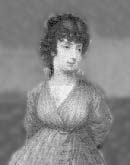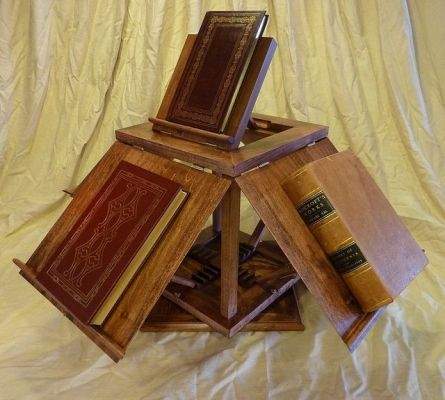Basic Facts:
Birth: April 13, 1743 at Goochland (Albermarle) County, Virginia
Death: July 4, 1826 at Charlottesville, Virginia
Married: Jan 1, 1772 to Martha Wayles Skelton (1748 – 1782)
Children: Six – Martha “Patsy” Jefferson (1772-1836), Jane Randolph Jefferson (1774-1775), unnamed son (1777), Mary Jefferson (1778-1804), Lucy Elizabeth Jefferson (1780-1781), Lucy Elizabeth Jefferson (1782-1784)
President: Two terms beginning March 4, 1801 and March 4, 1805
Quote: “I know well that no man will ever bring out of that office the reputation which carries him into it. The honeymoon would be as short in that case as in any other; and its moments of ecstasy would be ransomed by years of torment and hatred.”
Family:
In 1768, Jefferson began constructing his primary residence Monticello (Italian for “Little Mountain”) on a hilltop overlooking his 5,000-acre (20 km2; 7.8 sq mi) plantation.
 Martha Wayles first married Bathurst Skelton (born 1744), an attorney, on November 20, 1766, at age 18. Their son, John, was born on November 7, 1767. Bathurst Skelton died on September 30, 1768. Three-year-old John died on June 10, 1771. On January 1, 1772, Thomas Jefferson married his third cousin, Martha Wayles Skelton and she moved into the South Pavilion. During their ten years of marriage, Martha bore six children:
Martha Wayles first married Bathurst Skelton (born 1744), an attorney, on November 20, 1766, at age 18. Their son, John, was born on November 7, 1767. Bathurst Skelton died on September 30, 1768. Three-year-old John died on June 10, 1771. On January 1, 1772, Thomas Jefferson married his third cousin, Martha Wayles Skelton and she moved into the South Pavilion. During their ten years of marriage, Martha bore six children:
- Martha “Patsy” (1772–1836); She married Thomas Mann Randolph Jr., who was a politician at the federal and state levels and was elected as governor of Virginia (1819–1822), which made her the First Lady of Virginia. They had twelve children together.
- Jane (1774–1775);
- a son who lived for only a few weeks in 1777;
- Mary “Polly” (1778–1804); known as Polly in childhood and Maria as an adult, was the younger of Thomas Jefferson’s two daughters with his wife who survived beyond the age of 3. She married a first cousin, John Wayles Eppes, and had three children with him. Only their son Francis W. Eppes survived childhood. Maria died months after childbirth.
- Lucy Elizabeth (1780–1781);
- and another Lucy Elizabeth (1782–1784). Only Martha and Mary survived more than a few years.
Martha’s father, John Wayles, died in 1773, and the couple inherited 135 slaves, 11,000 acres (45 km2; 17 sq mi), and the estate’s debts. The debts took Jefferson years to satisfy, contributing to his financial problems.
Virginia plantation aristocracy was rife with marriage between kin, especially cousins.
-John Wayles married Martha Epps Wayles. They had one daughter – Martha Wayles who married Thomas Jefferson.
-John Wayles then married Tabitha Cocke. They had four daughters:
- Sarah who died in infancy
- Elizabeth who married Francis Eppes, Martha’s cousin. They had two sons, Richard and John. John married Thomas Jefferson’s daughter, Mary.
- Tabitha who married Robert Skipwith
- Anne who married Henry Skipwith, brother of Robert.
-John Wayles then married Elizabeth Lomax Skelton (she was the widow of Reuben Skelton, an older brother of Bathurst Skelton, his daughter Martha’s first husband). They had no children
-John Wayles then took Betty Hemings, an enslaved mixed-race woman, as a mistress, and gave Martha six additional half-siblings including Sally Hemings. Sally Hemings, was half-sister to Jefferson’s wife, Martha, and became the property of Thomas and Martha when John Wayles died. It is believed that Jefferson fathered six children with Sally Hemings.
So that her children would not grow up with stepmothers, Martha had asked Thomas Jefferson to never marry again, and he never did. Her request has been attributed to her own disagreeable relationships with her step-mothers. At her death, she was 33; he was 39.
Per Wikipedia: At his wife’s death, Thomas “was led from the room almost in a state of insensibility by his sister Mrs. Carr, who, with great difficulty, got him into his library where he fainted, and remained so long insensible that they feared he would never revive.” After the funeral, he withdrew to his room for three weeks. Afterward, he spent hours riding horseback alone around Monticello. His daughter Martha Jefferson Randolph wrote, “In those melancholy rambles I was his constant companion, a solitary witness to many a violent burst of grief.” Not until mid-October did Jefferson begin to resume a normal life when he wrote, “emerging from that stupor of mind which had rendered me as dead to the world as was she whose loss occasioned it.”
Other
Jefferson needed a hostess when ladies were present at the White House. His wife, Martha, had died in 1782. Jefferson’s two daughters, Martha Jefferson Randolph and Maria Jefferson Eppes, occasionally served in that role. On May 27, 1801, Jefferson asked Dolley Madison, wife of his long-time friend James Madison, to be the permanent White House hostess. She accepted, realizing the diplomatic importance of the position. She was also in charge of the completion of the White House mansion. Dolly served as White House hostess for the rest of Jefferson’s two terms and then eight more years as First Lady to President James Madison, Jefferson’s successor.
Thomas Jefferson wrote the Declaration of Independence. On June 11, 1776, Congress appointed a “Committee of Five” to draft a declaration. The first draft was written by Jefferson in 17 days. It then went back to Congress for editing. Jefferson later said it had been “mangled”. The wording of the Declaration of Independence was approved by delegates from the states on July 4, 1776 and sent to the printer for publication.
Thomas Jefferson was the third President, the first to be inaugurated in Washington, D.C.
Approximately 6,000 books from Jefferson’s private library were purchased for $23,950 to help start the Library of Congress.
Jefferson could speak four languages (English, Italian, French, Latin) and read two more (Greek and Spanish).
Jefferson was right-handed, but taught himself to write with his left hand.
Bears brought back from Lewis and Clark’s famous expedition were displayed in cages on the White House lawn. For years the White House was sometimes referred to as the “president’s bear garden.”
Jefferson’s greatest feat as president, an office he held from 1801 to 1809, was the Louisiana Purchase, effectively doubling the size of the United States.
Jefferson had a pet mockingbird named “Dick”. The bird was allowed to roam Jefferson’s office or perch on the president’s shoulder. When Jefferson played his violin, Dick would accompany with vocals. Dick and his colleagues followed Jefferson back to Monticello when he was finished with his second term in 1809.
The only Presidents to sign the Declaration of Independence, Adams and Jefferson both died on its 50th anniversary, July 4, 1826. Adams’ dying words were “Thomas Jefferson survives”. Jefferson, however, had passed on a few hours earlier.
Though Jefferson was highly skilled at writing and conversation, though he was not good at public speaking and avoided it whenever possible.
From: Library of Congress: Description of a visit to Thomas Jefferson at Monticello in 1782,
from Travels in North-America, in the Years 1780-81-82 by the Marquis de Chastellux.
Let me describe to you a man, not yet forty, tall, and with a mild and pleasing countenance…. An American, who without ever having quitted his own country, is at once a musician, skilled in drawing, a geometrician, an astronomer, a natural philosopher, legislator, and statesman…. Sometimes natural philosophy, at others politics or the arts, were the topics of our conversation, for no object had escaped Mr. Jefferson; and it seemed as if from his youth he had placed his mind, as he has done his house, on an elevated situation, from which he might contemplate the universe.
Jefferson is credited with several inventions, including the swivel chair, a pedometer, a machine to make fiber from hemp, a letter-copying machine, and the Lazy Susan.
 Jefferson was a science enthusiast. Thomas Jefferson kept a record and drawings of all the plants and animals in Virginia. He loved to gaze and examine stars, planets, and comets. He loved technology and innovation, and one of his favorites was a rotating book stand which would hold five books at a time.
Jefferson was a science enthusiast. Thomas Jefferson kept a record and drawings of all the plants and animals in Virginia. He loved to gaze and examine stars, planets, and comets. He loved technology and innovation, and one of his favorites was a rotating book stand which would hold five books at a time.
Jefferson’s remains were buried at Monticello. Jefferson wrote his own epitaph without mentioning that he served as President of the United States.
HERE WAS BURIED THOMAS JEFFERSON, AUTHOR OF THE DECLARATION OF AMERICAN INDEPENDENCE, OF THE STATUTE OF VIRGINIA FOR RELIGIOUS FREEDOM, AND FATHER OF THE UNIVERSITY OF VIRGINIA.
On April 29,1962, President John F. Kennedy, welcomed a group of Nobel Prize winners to a dinner in their honor at The White House. He remarked: “I think this is the most extraordinary collection of talent, of human knowledge, that has ever been gathered together at the White House — with the possible exception of when Thomas Jefferson dined alone.”
Return to The Presidents main page.
Sources:
Internet Public Library
pavellas.com
ohfact.com
Mental floss.com
memory.loc.gov
Greenman, Barbara. The Timeline History of U. S. Presidents and First Ladies. Thunder Bay Press, San Diego, California, 2009.
